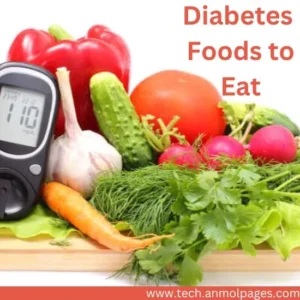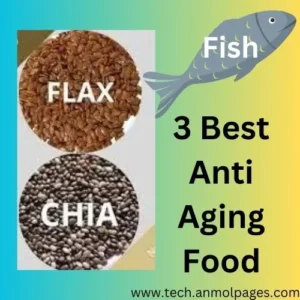Dried Fruits and Diabetes: Benefits Risks and Precautions
Today, we are talking about the dried fruits for people with diabetes. Are dried foods good, bad, or ugly for diabetics? We’ll talk about that. We’ll talk about what dried fruits are, the health benefits, the carbs in them, and their glycemic index. Well, the best part is the last part, so stay and keep reading until the end of this blog.
Dried Fruits and Diabetes: Benefits Risks and Precautions
Dry fruits contain some of the best essential foods the human body needs to stay healthy. They are made after extracting the water from them. That’s why we call them dry. Oh, well. That’s smart of me to say. Dried fruits are full of essential nutrients, including enzymes, vitamins, minerals, and fibers. Whatever you call it.
They protect the body from environmental damage such as oxidative damage. These fruits are also a great source of healthy food for diabetic people who are very concerned, just like you, about what to eat and what not to eat. But besides their countless benefits, these dry fruits can actually cause several harms to your body as well. Therefore, they must be used in a balanced way.

Warning! Eating dried fruits mindlessly can cost you big time. Yes, they can be part of a healthy diet, but as a diabetic, you should know everything about them before declaring a food item healthy or unhealthy. Well, yes, there is plenty of literature on dry fruits, but it is all confusing and conflicting. Let’s dive into further detail, without being boring. I promise! So, water removal from the fruits can be done in many different ways.
Two Ways Dried fruits Can Be Made
Dried fruits can be made in two ways: either through sun drying or using special dehydrators or dryers. No, not your hair dryer! This process results in a shrunken, energy-dense, and carbohydrate-rich fruit packed with essential nutrients. Dried fruits also provide vital nutrients in a balanced way with increased bioavailability, meaning your body can easily absorb and utilize them.
Additionally, dried fruits contain medicinal properties due to the vast number of nutrients present. They include minerals, vitamins, and enzymes, along with polyphenols—known for their high antioxidant activity. These antioxidants help reduce oxidative stress, improve blood flow, support digestion, and lower the risk of inflammatory disorders.

Health Benefits of Dried Fruits for Diabetics
Moreover, dried fruits are low in fat, sodium, and cholesterol, which is a great health benefit. Some people use dried fruits to naturally sweeten foods without adding refined sugars, and they also give a natural color to dishes, making them visually appealing. So, what should you look for when purchasing dried fruits?
When consuming dried fruits, it’s essential to practice portion control. Overeating anything can be harmful, and this applies to dried fruits as well. Some dried fruits are coated with sugar before drying to enhance their sweetness, and these are often referred to as “candy fruits.” It’s best to avoid these processed fruits because they can lead to the very health issues you’re trying to prevent, such as heart disease, obesity, and even cancer.

Potential Risks of Consuming Dried Fruits in Diabetes
Consuming too many of these sugary dried fruits can have the opposite effect of what you’re aiming for. Additionally, dried fruits are high in fiber, and excessive consumption can lead to gastrointestinal issues like cramps, bloating, gas, and even diarrhea, especially in individuals with conditions like gastroparesis.
Overindulging in dried fruits may also result in weight gain due to their natural fruit sugars, primarily in the form of fructose. Some may even contain artificial sugars added during the drying process, which can contribute to tooth decay, especially if you’re frequently snacking on them.
Many dried fruits, particularly the sugar-coated varieties, have a high glycemic index. This means they can cause a rapid spike in blood sugar levels, followed by a sudden crash once the glucose exits the bloodstream. This effect is common in people with insulin resistance and can occasionally lead to reactive hypoglycemia, where blood sugar levels drop below normal after a large intake of carbohydrates.

Side Effects Of Preservatives in Dried Fruits
Additionally, preservatives like sulfites are often added to dried fruits to prevent discoloration during the drying process, which is another factor to consider when choosing dried fruits.
These preservatives can cause serious health issues such as abdominal cramps and skin rashes. In some cases, they may even trigger asthmatic attacks due to allergic reactions. Improper handling and storage of dried fruits can lead to the growth of harmful fungi and toxins like aflatoxins, which can have severe side effects and may even cause cancer in the long term.
If you’re diabetic, you might wonder how much dried fruit you can safely eat. Typically, one serving of dried fruit is one-fourth of a cup, which is about 15 grams, equivalent to one carb exchange. You can include dried fruits in your diet, mixed with nuts or as an alternative to fresh fruits, but it’s important to avoid added sugars and monitor your daily carbohydrate intake.

Hidden Sugars in Dried Fruits and Their Impact
Unfortunately, due to the dehydration process, dried fruits have a higher sugar content, even in smaller portions. The glycemic index (GI) of dried fruits varies, with dates having a GI of 62, dried apples 29, apricots 30, peaches 35, plums 21, figs 61, raisins 59, and prunes 38. Dried fruits like prunes, apples, apricots, peaches, and plums have a low glycemic index and are better options for diabetics.
However, figs fall into the medium glycemic index category, and while they can cause spikes in blood sugar, dates and raisins, with their higher glycemic load, should be limited in a diabetic diet to avoid serious spikes and potential health complications.
